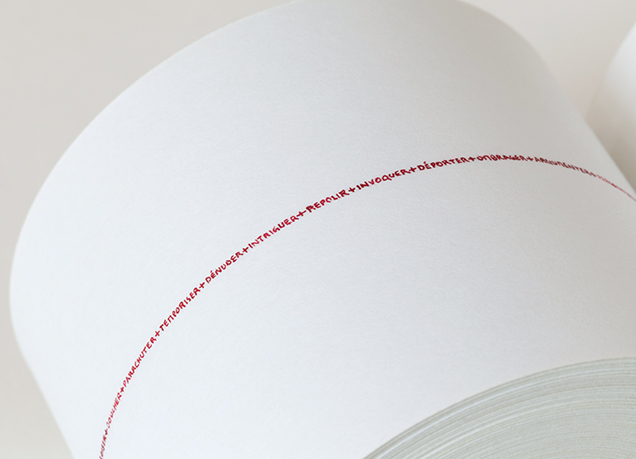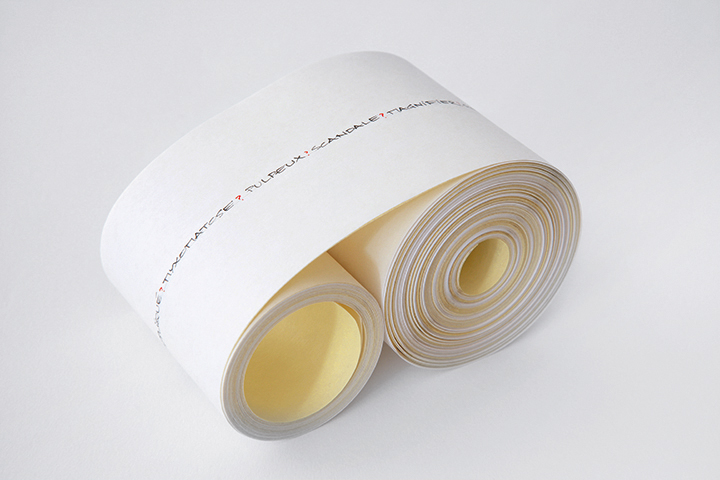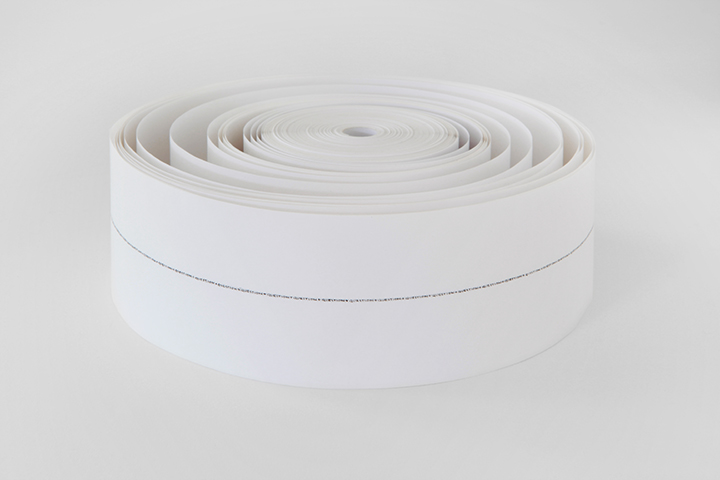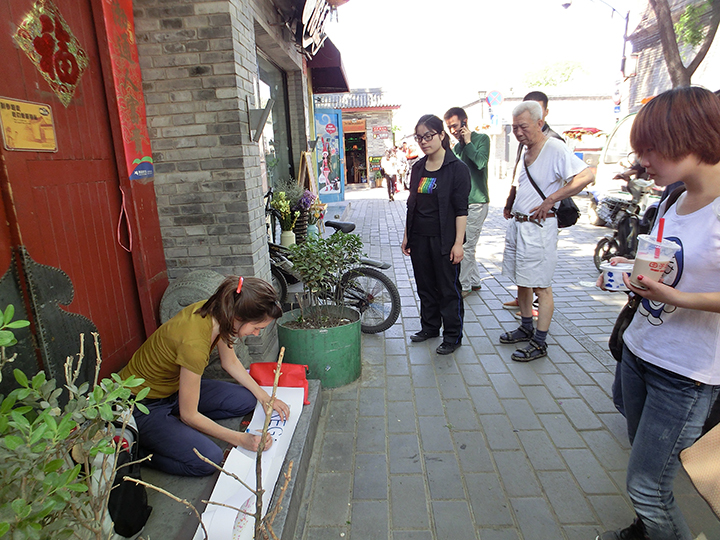FR
Ces « manuscrits » sur rouleaux renvoient aux premiers âges de la transmission de la connaissance par l’écrit, aux rouleaux de papyrus et de parchemin de notre histoire écrite. Mais ils peuvent aussi évoquer les petits rouleaux contemporains des échanges administratifs ou commerciaux mécanisés. Le choix de l’énumération arbitraire et celui du support introduisent également le facteur essentiel de la temporalité. Une donnée qui s’avèrera omniprésente dans l’œuvre en flux tendu d’Eva Evrard. Les rouleaux font 43 m de long, « déroulent » une chaîne linéaire de milliers de mots, et exigent donc non seulement une gestuelle appropriée mais également une lecture par étapes, une lecture au rythme du corps. Ici, l’artiste a marqué la temporalité de la réalisation de l’œuvre en changeant de couleur d’encre à chaque reprise de son écriture. Celle de la lecture restera en revanche à la disposition du lecteur/regardeur. Une invitation à l’engagement physique que l’artiste va développer en sourdine de diverses manières mais qui sera toujours présente dans ses œuvres postérieures.
Ann Hindry
Historienne de l'art, critique d'art, officier dans l'Ordre des Arts et Lettres.
EN
These “manuscripts” on rolls recall the first era of the transmission of written knowledge, the papyrus and parchment rolls of our written history. But they may also evoke the small rolls used in mechanized administrative or commercial exchanges in modern times. The choice of arbitrary enumeration and the nature of the support also introduce the essential factor of temporality. This is omnipresent in the taut flow of Evrard’s work. The rolls are 43 metres long and unroll a linear chain of thousands of words and therefore call not only for appropriate gestures but also for reading in stages, a reading to the rhythm of the body. Here, the artist marked the time of the work’s making by changing the colour of the ink each time she returned to her writing. As for the time of the reading, that remains up to the reader/viewer. The artist subtly develops this invitation to physical engagement in ways that are diverse but always present in her later works.
Ann Hindry
Art historian and art critic



